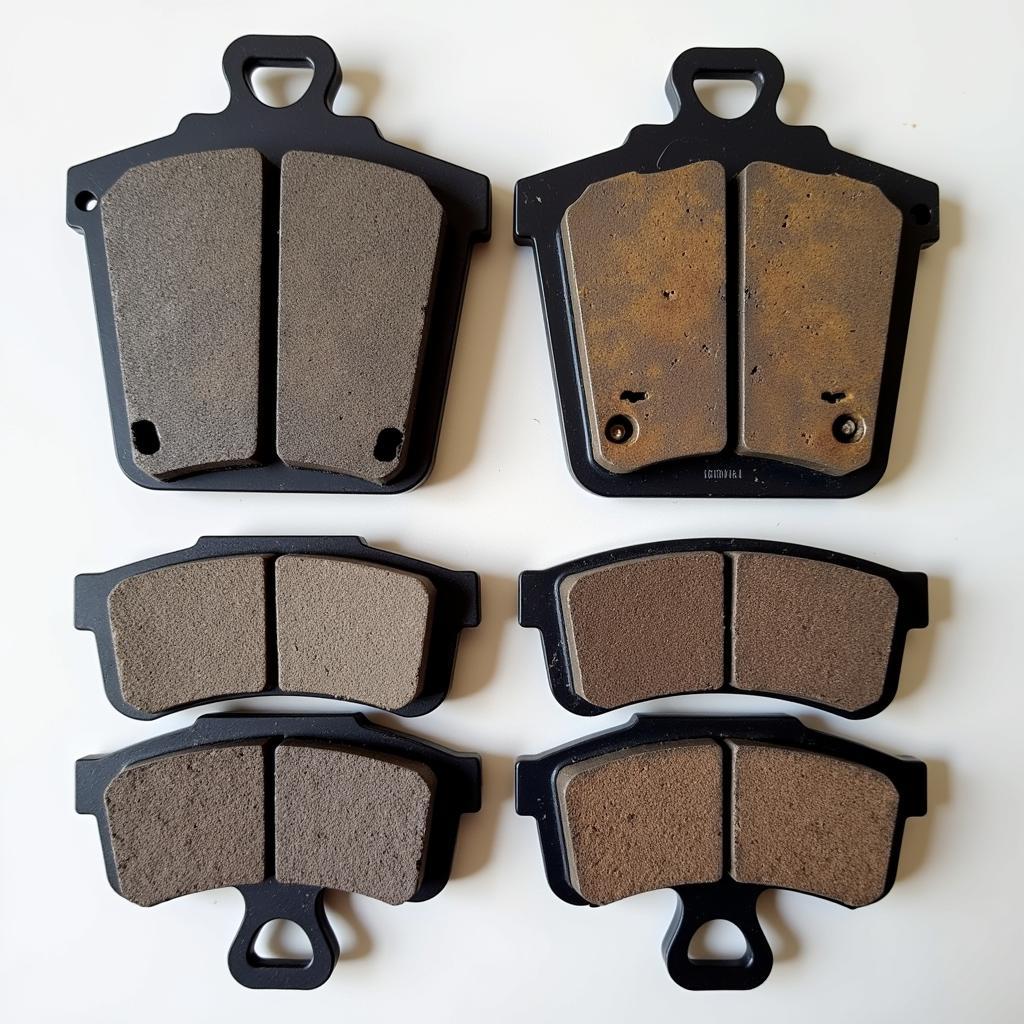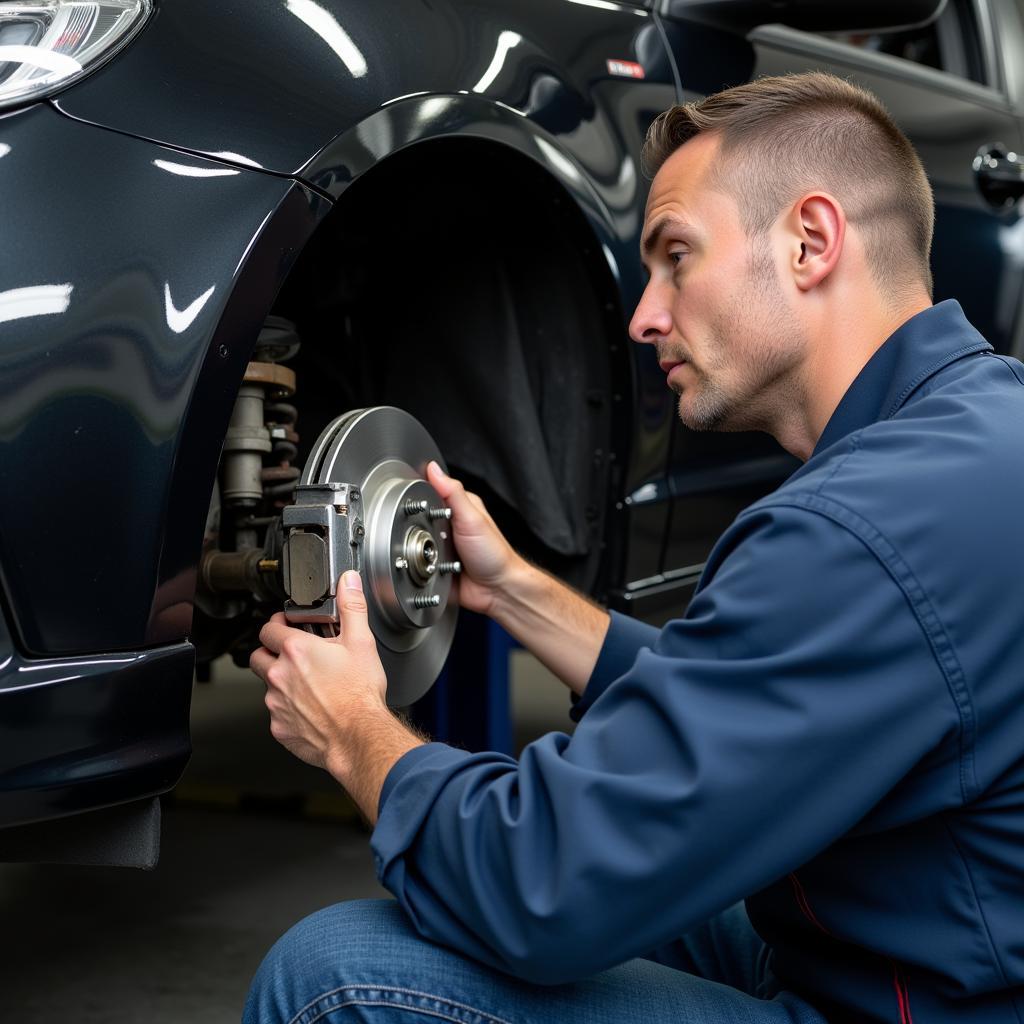The brake service warning light, a beacon of caution on your dashboard, illuminates to signal potential issues within your braking system. While it could be as simple as a reminder for routine maintenance, ignoring this warning light could lead to hazardous driving conditions and costly repairs.
This comprehensive guide delves into the common causes of a brake service warning light, helps you diagnose the problem, and provides guidance on the necessary actions. Remember, a well-maintained braking system is crucial for your safety and the safety of others on the road.
Understanding the Brake Service Warning Light
The brake service warning light, often symbolized by an exclamation mark within a circle or parentheses, or the word “BRAKE,” serves as your car’s communication system for brake-related concerns. When illuminated, it doesn’t necessarily mean an immediate emergency, but it demands your immediate attention.
Common Causes of a Brake Service Warning Light
There are several reasons why your brake service warning light might be on. Let’s explore some of the most common culprits:
1. Low Brake Fluid Level
Brake fluid is the lifeblood of your braking system, transferring the force from your foot on the pedal to the brakes. A low brake fluid level, often due to leaks or worn brake pads, can trigger the warning light.
What to do: Check your brake fluid level. If it’s low, it’s crucial to have your car inspected by a mechanic to identify and fix the underlying cause of the fluid loss.
2. Worn Brake Pads
Brake pads are designed to wear down over time. When they reach a certain thickness, the brake pad wear sensor, a small metal tab, comes into contact with the brake rotor, triggering the warning light.
What to do: If your brake pads are worn, they need to be replaced promptly. Driving with worn brake pads can compromise your braking performance and potentially damage the rotors.
 Comparison of Worn Brake Pads with New Ones
Comparison of Worn Brake Pads with New Ones
3. Faulty Brake Sensors
The brake sensors play a crucial role in monitoring the health of your braking system. A malfunctioning sensor might send a false signal, causing the warning light to illuminate even if there’s no actual problem.
What to do: If you suspect a faulty brake sensor, it’s recommended to have your car diagnosed by a qualified mechanic who can test the sensors and replace them if needed.
4. Issues with the ABS System
The Anti-lock Braking System (ABS) prevents wheel lockup during hard braking, ensuring vehicle control. Problems within the ABS system, such as a faulty ABS module or a malfunctioning wheel speed sensor, can trigger the brake service warning light.
What to do: Diagnosing and repairing ABS issues requires specialized knowledge and equipment. If you suspect a problem with your ABS system, it’s best to take your car to a qualified mechanic.
5. Parking Brake Engaged
While seemingly obvious, accidentally leaving the parking brake partially engaged is a common reason for the warning light to appear.
What to do: Before panicking, ensure your parking brake is fully disengaged. If the light persists, further investigation is needed.
What to Do When the Brake Service Warning Light Comes On
The appearance of the brake service warning light warrants immediate attention, but it doesn’t always signify an emergency. Follow these steps:
- Safely Pull Over: If possible, find a safe location to pull over and assess the situation.
- Check Your Parking Brake: Ensure your parking brake is fully disengaged.
- Inspect Your Brake Fluid: If you’re comfortable, carefully check your brake fluid level. Refer to your owner’s manual for the location of the reservoir and the recommended fluid level.
- Avoid Driving: If the brake fluid level is low or you notice any other concerning symptoms, such as unusual noises or a soft brake pedal, avoid driving and have your car towed to a trusted mechanic.
- Schedule an Inspection: Even if you don’t notice any immediate issues, it’s crucial to schedule an inspection with a qualified mechanic as soon as possible to diagnose and address the underlying cause of the warning light.
 Mechanic Performing a Car Brake Inspection
Mechanic Performing a Car Brake Inspection
Remote Diagnostics and Software Solutions: The Future of Brake Service
The automotive industry is rapidly evolving, and remote diagnostics and software solutions are transforming the way brake service and repairs are conducted.
“Remote diagnostics allow us to access a vehicle’s onboard computer system from anywhere in the world,” says John Smith, a Senior Automotive Engineer at CarDiagTech. “This means we can quickly identify the cause of a brake service warning light and, in many cases, resolve the issue remotely through software updates or resets.”
This technology offers numerous benefits for car owners:
- Faster Diagnosis: Remote diagnostics can often pinpoint the issue within minutes, saving valuable time compared to traditional inspection methods.
- Convenience: Issues can be diagnosed and potentially resolved without even leaving your home.
- Cost Savings: Remote diagnostics can often prevent unnecessary trips to the mechanic and reduce labor costs associated with traditional troubleshooting methods.
Conclusion
The brake service warning light is a crucial safety feature in your vehicle, alerting you to potential issues with your braking system. Ignoring this warning can lead to hazardous driving conditions and costly repairs.
By understanding the common causes, taking appropriate immediate actions, and embracing advancements like remote diagnostics, you can ensure a safer and smoother driving experience. Remember, when it comes to your brakes, prevention and early detection are key.
FAQs
1. Can I drive with the brake service warning light on?
While it’s not recommended to drive with any warning light illuminated, if the light is due to worn brake pads and you’re experiencing no other issues, you may be able to drive a short distance to a mechanic. However, if the light is accompanied by other symptoms, such as a soft brake pedal or unusual noises, it’s crucial to stop driving and have your car towed for safety.
2. How much does it cost to fix a brake service warning light?
The cost of addressing a brake service warning light can vary significantly depending on the underlying cause. A simple brake fluid top-up might cost as little as $20, while a brake pad replacement can range from $150 to $300 per axle. More complex issues, such as a faulty ABS module, can result in repairs exceeding $1,000.
3. How often should I get my brakes serviced?
It’s generally recommended to have your brakes inspected annually or every 12,000 miles. However, your driving habits and the type of brake pads you have can influence this recommendation. Consult your owner’s manual or a trusted mechanic for specific guidance.
4. What is involved in a brake service?
A typical brake service includes an inspection of the entire brake system, including the pads, rotors, calipers, hoses, and fluid. Worn components are replaced, and the brake fluid is typically flushed and replaced.
5. Can I check my brake fluid level myself?
Yes, you can usually check your brake fluid level by locating the brake fluid reservoir under the hood. Refer to your owner’s manual for the exact location and instructions. If you’re uncomfortable performing this check, a mechanic can assist you.
6. How can I prevent future brake problems?
Regular brake inspections, gentle braking habits, and addressing any warning lights promptly can significantly reduce the likelihood of future brake problems.
7. Can remote diagnostics fix my 2010 Audi A4 parking brake malfunction warning light?
It’s possible that remote diagnostics can identify and potentially resolve certain issues related to a 2010 Audi A4 parking brake malfunction warning light. However, the effectiveness depends on the specific cause of the problem and the capabilities of the diagnostic software. It’s best to consult with a qualified mechanic or a remote diagnostics specialist to determine if this solution is suitable for your situation. You can also learn more about turning off a brake switch warning light in our comprehensive guide.

